Las correas de reloj de cuero y piel son elegantes y duraderas, pero con el tiempo acumulan suciedad, sudor y...
How to produce a leather watch strap?
Types of leather watch straps
According to their production process, we can find three big groups. I sorted them out according to the difficulty level and required knowledge:
- Cut edge
- Remborder
- Semi-remborder
Each one of these types requires different competencies, technology, and knowledge. Ultimately, this knowledge is the main restraint and what leads some producers to offer only a very specific type of leather strap. Let's see a bit of each of these types and what makes them different.
Leather strap produced at cut edge
This is the simplest way to make a watch strap and anyone can make it. You will understand that straight ahead. What do we need?
- A piece of leather
- A ruler
- A cutter
- Contact adhesive
- Someone handy, but, as you'll see, doesn't need to have years of experience.
Below you can see a video that perfectly illustrates this kind of production. With slight variations, that is how the so-called "artisanal" straps are made, and I believe it is easy to understand why the quality of the finish is usually not that good. I must say that there are incredible artisans who make real works of art, but you will probably agree with me that they represent a minority. If we put handicraft aside and talk about the industrial production of straps in some enterprises from Madrid or from the Alicante area, the production is pretty much the same, with small differences:
- Presses and strip cutters are used to cut the leather into the shape of the strap, to open the holes where the buckle fits in or the hole for the strap's tongue.
- Reducers are used to reduce the strap's thickness.
- Sewing machines are used.
What is usually the problem with this type of watch strap?
- Firstly, the fact that the strip cutters get damaged rather quickly and it is necessary to change them frequently, which is not done. If you have one of those so-called "national" straps (as if the others were aliens), I invite you to slide your finger through the strap's corner and you will see that it is not soft.
- The second major problem is that the glues that are used are developed for footwear, and a watch strap is not a shoe. The surfaces to be glued are much smaller, the thicknesses are not the same, let alone the strains they are exposed to, etc. In the end, they peel off. And, naturally, a glue thought to attach the sole to the shoe has no reason to take into account possible allergies that it may cause, once it will not be in contact with the skin. That is often the source of the allergies and inconveniences many clients report to us when they use one of those inaccurately called "national" straps.
- When painting the strap's corner, anything can be used. I have even seen plastic paint like Titanlux, or shoes cleaning liquid like Kanfor, etc.
- The holes for the pins are often occluded with glue.
Obviously, this is a very cost-efficient way of producing. To make a strap, a factory takes usually between 12 and 18 steps. We will see that in the following video https://youtu.be/IyUUIGCK1zo
Diloy Factory, at cut straps?
The answer is yes, we produce several at cut straps. Specifically, our Vintage range is produced following this technic, and we do so to be loyal to the way they were produced in the 50s, 60s, and 70s. But we introduced several improvements:
- We use glues that are specially developed for the watch strap industry, eco-friendly and harmless to the user's skin. These glues fulfil all the European and North-American regulations for objects that will be in direct contact with skin.
- We make sure our cutters are always well sharpened. Not least because of the cleaner the cut, the least work we have afterwards. It is a simple matter of costs because we worry about those details. Certainly, in your shop, you have one of our at cut straps and other from our competition. Take a minute to examine their edges, slide your finger through them, which one do you think has the best finishing?
- To accomplish this finishing, we sand all the corners until we get a uniform surface. It is a slow step that needs to be handmade one strap at a time, but in the end, the difference can be noted.
- We use special inks to paint the strap's corners. These inks are specially developed for leather. They are not plastic paint, as it often is used.
- Instead of one coating, each strap gets 5 to 7 coatings with their respective drying cycles.
Finally, while our competition justifies its high costs because it has to make 18 different steps, we never make an at cut strap with less than 40 steps. Each one of these steps adds value to the final product, and that can be noted. Appart from the Vintage watch straps, we have some sports models that we produce at cut.
Remborder edge leather watch straps
In this case, the leather in the upper part of the strap "hugs" the lining. As in the previous case, it is a type of strap that almost anyone can make, but here one would need, at least, a good reducer and a bit more ability because otherwise, the result would be far from good. There is a big advantage in comparison to at cut straps. If it is well made, the finishing is more elegant. Who uses this kind of technique? Usually, factories that don't have the technology for the semi-turned either because of the required investment or for lack of knowledge. Also, factories specialised in producing watch straps for big brands, in which costs are not a problem and productions are in limited quantities. These are small factories with highly skilled employees. Unfortunately, it is not common to see this kind of finishing in our markets. Or rather, there are many turned corner straps that are, as Matias Prat put it, "to turn... down". At Diloy, we use this technique for over 20 years, but here you can see how it is produced. Our current process is similar, except for the framing process. I believe this is a really interesting video. https://youtu.be/c2XwdWLwpFQ
Semi-remborder edge leather watch straps
While in the previous process, the strap's leather "hugged" the lining, in the case of the semi-turned straps, the leather coats the strap's edge and ends precisely in the lining's edge. What is needed to make a semi-turned watch strap? This kind of production is no longer within the reach of anyone, once it implies technical knowledge, highly qualified personnel, and a substantial investment in technology. In short, we need:
- Adequate leathers. We can't make the strap with any leather.
- Special glues, because there are some surfaces to be glued about just. one millimeter large.
- Moulds, many moulds, really a lot: to cut the upper part, the inside, the linings, to mark the sewing lines, etc., etc., etc. Naturally, each size requires a different set of moulds.
- A high-quality leather splitting machine. We will reduce the leather to 1.4mm large, and the parts that are to be folded to make the corner at 0.6mm. However, it has to be 0.6 mm uniform, and that's not in the reach of every splitting machine.
- The semi-remborder presses themselves, which are the crown jewel, being responsible for bending the leather's corners and leaving them perfect.
Altogether, the simplest semi-turned strap produced by Diloy has a total of 52 steps. Do you believe that anyone can offer the same quality in 18 steps that we do in 52? Obviously not. In this video, you will see some of the machines we use. They are not all here. Some of them we designed and developed ourselves. Others were completely altered to adapt to our workflow. You will also see some of those we use to make at cut straps, like the edge polisher or the machine to paint corners. https://youtu.be/Vtrcu29PYu4 Now you know everything that is behind a strap. Now you only need to pay a visit to our leather watch bands collection and suit up your watch.
Types of leather watch straps
According to their production process, we can find three big groups. I sorted them out according to the difficulty level and required knowledge:
- Cut edge
- Remborder
- Semi-remborder
Each one of these types requires different competencies, technology, and knowledge. Ultimately, this knowledge is the main restraint and what leads some producers to offer only a very specific type of leather strap. Let's see a bit of each of these types and what makes them different.
Leather strap produced at cut edge
This is the simplest way to make a watch strap and anyone can make it. You will understand that straight ahead. What do we need?
- A piece of leather
- A ruler
- A cutter
- Contact adhesive
- Someone handy, but, as you'll see, doesn't need to have years of experience.
Below you can see a video that perfectly illustrates this kind of production. With slight variations, that is how the so-called "artisanal" straps are made, and I believe it is easy to understand why the quality of the finish is usually not that good. I must say that there are incredible artisans who make real works of art, but you will probably agree with me that they represent a minority. If we put handicraft aside and talk about the industrial production of straps in some enterprises from Madrid or from the Alicante area, the production is pretty much the same, with small differences:
- Presses and strip cutters are used to cut the leather into the shape of the strap, to open the holes where the buckle fits in or the hole for the strap's tongue.
- Reducers are used to reduce the strap's thickness.
- Sewing machines are used.
What is usually the problem with this type of watch strap?
- Firstly, the fact that the strip cutters get damaged rather quickly and it is necessary to change them frequently, which is not done. If you have one of those so-called "national" straps (as if the others were aliens), I invite you to slide your finger through the strap's corner and you will see that it is not soft.
- The second major problem is that the glues that are used are developed for footwear, and a watch strap is not a shoe. The surfaces to be glued are much smaller, the thicknesses are not the same, let alone the strains they are exposed to, etc. In the end, they peel off. And, naturally, a glue thought to attach the sole to the shoe has no reason to take into account possible allergies that it may cause, once it will not be in contact with the skin. That is often the source of the allergies and inconveniences many clients report to us when they use one of those inaccurately called "national" straps.
- When painting the strap's corner, anything can be used. I have even seen plastic paint like Titanlux, or shoes cleaning liquid like Kanfor, etc.
- The holes for the pins are often occluded with glue.
Obviously, this is a very cost-efficient way of producing. To make a strap, a factory takes usually between 12 and 18 steps. We will see that in the following video https://youtu.be/IyUUIGCK1zo
Diloy Factory, at cut straps?
The answer is yes, we produce several at cut straps. Specifically, our Vintage range is produced following this technic, and we do so to be loyal to the way they were produced in the 50s, 60s, and 70s. But we introduced several improvements:
- We use glues that are specially developed for the watch strap industry, eco-friendly and harmless to the user's skin. These glues fulfil all the European and North-American regulations for objects that will be in direct contact with skin.
- We make sure our cutters are always well sharpened. Not least because of the cleaner the cut, the least work we have afterwards. It is a simple matter of costs because we worry about those details. Certainly, in your shop, you have one of our at cut straps and other from our competition. Take a minute to examine their edges, slide your finger through them, which one do you think has the best finishing?
- To accomplish this finishing, we sand all the corners until we get a uniform surface. It is a slow step that needs to be handmade one strap at a time, but in the end, the difference can be noted.
- We use special inks to paint the strap's corners. These inks are specially developed for leather. They are not plastic paint, as it often is used.
- Instead of one coating, each strap gets 5 to 7 coatings with their respective drying cycles.
Finally, while our competition justifies its high costs because it has to make 18 different steps, we never make an at cut strap with less than 40 steps. Each one of these steps adds value to the final product, and that can be noted. Appart from the Vintage watch straps, we have some sports models that we produce at cut.
Remborder edge leather watch straps
In this case, the leather in the upper part of the strap "hugs" the lining. As in the previous case, it is a type of strap that almost anyone can make, but here one would need, at least, a good reducer and a bit more ability because otherwise, the result would be far from good. There is a big advantage in comparison to at cut straps. If it is well made, the finishing is more elegant. Who uses this kind of technique? Usually, factories that don't have the technology for the semi-turned either because of the required investment or for lack of knowledge. Also, factories specialised in producing watch straps for big brands, in which costs are not a problem and productions are in limited quantities. These are small factories with highly skilled employees. Unfortunately, it is not common to see this kind of finishing in our markets. Or rather, there are many turned corner straps that are, as Matias Prat put it, "to turn... down". At Diloy, we use this technique for over 20 years, but here you can see how it is produced. Our current process is similar, except for the framing process. I believe this is a really interesting video. https://youtu.be/c2XwdWLwpFQ
Semi-remborder edge leather watch straps
While in the previous process, the strap's leather "hugged" the lining, in the case of the semi-turned straps, the leather coats the strap's edge and ends precisely in the lining's edge. What is needed to make a semi-turned watch strap? This kind of production is no longer within the reach of anyone, once it implies technical knowledge, highly qualified personnel, and a substantial investment in technology. In short, we need:
- Adequate leathers. We can't make the strap with any leather.
- Special glues, because there are some surfaces to be glued about just. one millimeter large.
- Moulds, many moulds, really a lot: to cut the upper part, the inside, the linings, to mark the sewing lines, etc., etc., etc. Naturally, each size requires a different set of moulds.
- A high-quality leather splitting machine. We will reduce the leather to 1.4mm large, and the parts that are to be folded to make the corner at 0.6mm. However, it has to be 0.6 mm uniform, and that's not in the reach of every splitting machine.
- The semi-remborder presses themselves, which are the crown jewel, being responsible for bending the leather's corners and leaving them perfect.
Altogether, the simplest semi-turned strap produced by Diloy has a total of 52 steps. Do you believe that anyone can offer the same quality in 18 steps that we do in 52? Obviously not. In this video, you will see some of the machines we use. They are not all here. Some of them we designed and developed ourselves. Others were completely altered to adapt to our workflow. You will also see some of those we use to make at cut straps, like the edge polisher or the machine to paint corners. https://youtu.be/Vtrcu29PYu4 Now you know everything that is behind a strap. Now you only need to pay a visit to our leather watch bands collection and suit up your watch.

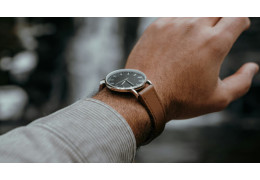
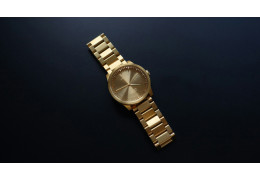
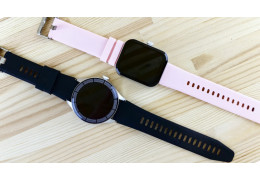
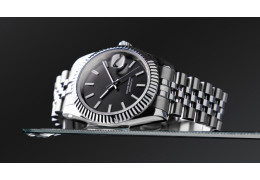
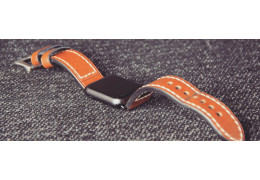


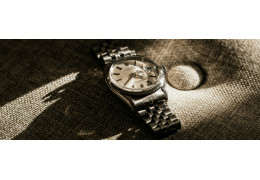










Leave a comment
Log in to post comments